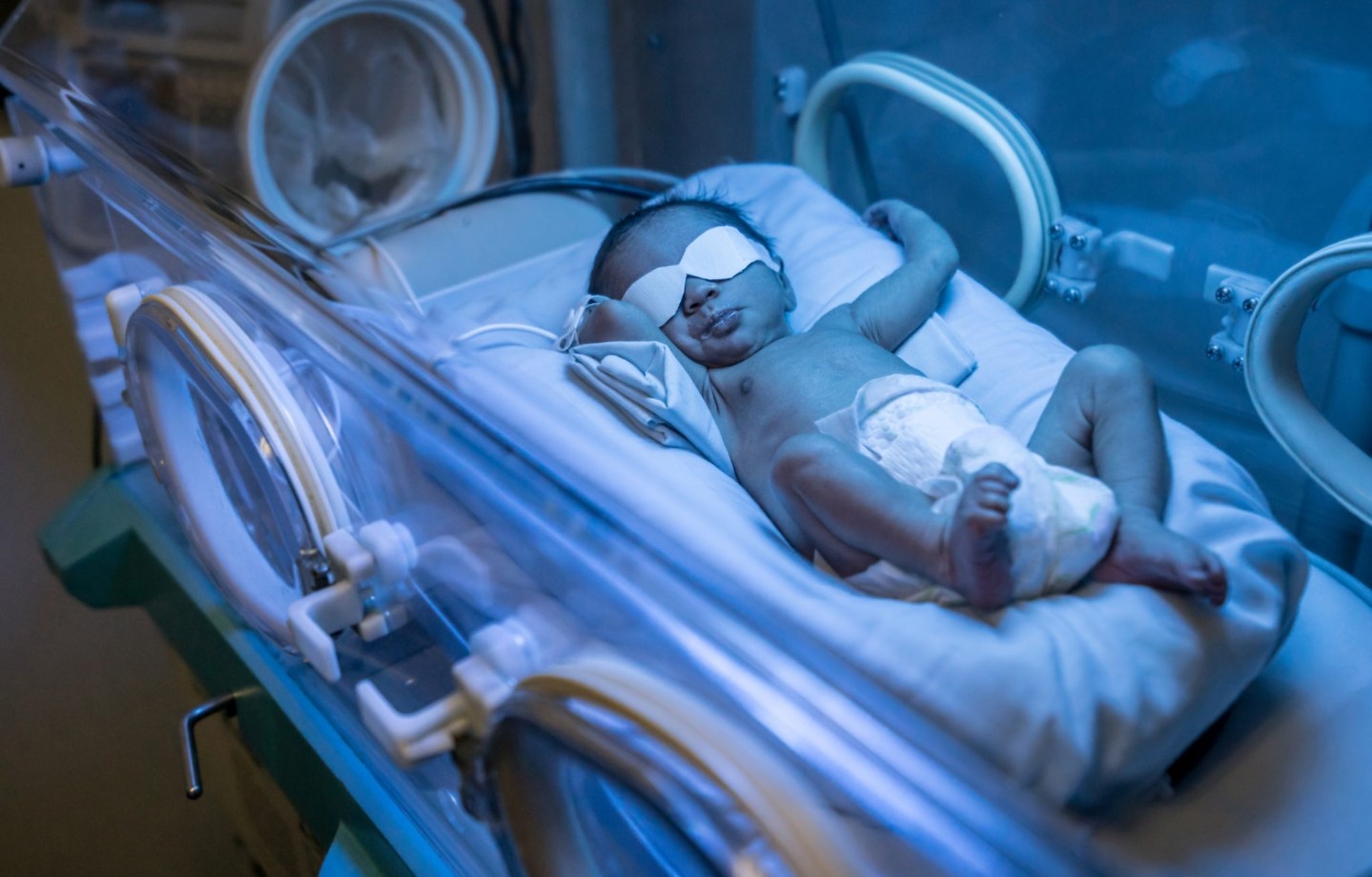Pelvic Floor Dysfunction in Children and Adolescents: A Guide for Parents
JUL 07, 2025Childhood pelvic floor issues may include urinary urgency, urinary frequency, urinary incontinence, bedwetting, and constipation.
Read More
Newborn jaundice is very common. Jaundice occurs when a yellow pigment called bilirubin builds up in the blood, which causes yellowing of the infant’s skin and eyes. Phototherapy uses blue light to help treat newborn jaundice.
Bilirubin is a natural byproduct of the normal breakdown of "used" red blood cells. There are many reasons why bilirubin levels are increased in newborns. Newborns break down their red blood cells more quickly than adults. If there is a mismatch between mother and baby’s red blood types, the baby's red blood cells may break down even more rapidly than usual and release more bilirubin. Bruising of the skin or scalp after delivery may result in more red blood cell breakdown, releasing more bilirubin.
Our liver naturally removes bilirubin from the bloodstream and passes it into the intestines. The liver of a newborn is not fully developed to handle the bilirubin. An immature newborn liver also contributes to excess bilirubin in the bloodstream. Once bilirubin gets into the intestines, it needs to pass out of the body in stools. Decreased passage of stool by a baby can also lead to increased circulation of bilirubin.
The American Academy of Pediatrics has set different bilirubin threshold levels to treat newborn jaundice. Treatment thresholds are based on risk factors, such as the gestational age of the baby, age in hours of the baby, and whether there is a blood type mismatch between mother and baby. Treatment of jaundice with phototherapy is started at lower bilirubin levels in babies born before 38 weeks, jaundice in the first couple of days after birth, and jaundice in babies with mother-baby blood type mismatch.
Phototherapy uses light waves that are absorbed by the baby’s skin to change bilirubin to a water-soluble, dissolved form of bilirubin. After bilirubin is dissolved by the light, the infant can excrete the bilirubin through urine or bowel movements. It has been discovered that the optimal color of light to make bilirubin water soluble is in the blue spectrum.
Phototherapy can be provided with an overhead light or a blanket of lights placed underneath the baby. Eye protection is given to the infant. Phototherapy can reduce bilirubin levels 1-3mg/dL per day, and most babies have phototherapy treatment for one to two days. The baby may have a mild skin rash and loose stools while on phototherapy that resolve after phototherapy is stopped.
Learn more about CHI Health Maternity Centers.
Written by Hannah Weiss (Creighton Medical Student) in collaboration with Dr. Terrance Zach.

Childhood pelvic floor issues may include urinary urgency, urinary frequency, urinary incontinence, bedwetting, and constipation.
Read More
There is so much information out there regarding the postpartum journey, it can be difficult to decipher what is fact vs fiction. Let’s dive into some common myths about the postpartum period.
Read More
If you have a positive antibody screen, it means that your body has made antibodies that could attack your baby’s red blood cells.
Read MoreWhen you need local health information from a trusted source, turn to the CHI Health Better You eNewsletter.